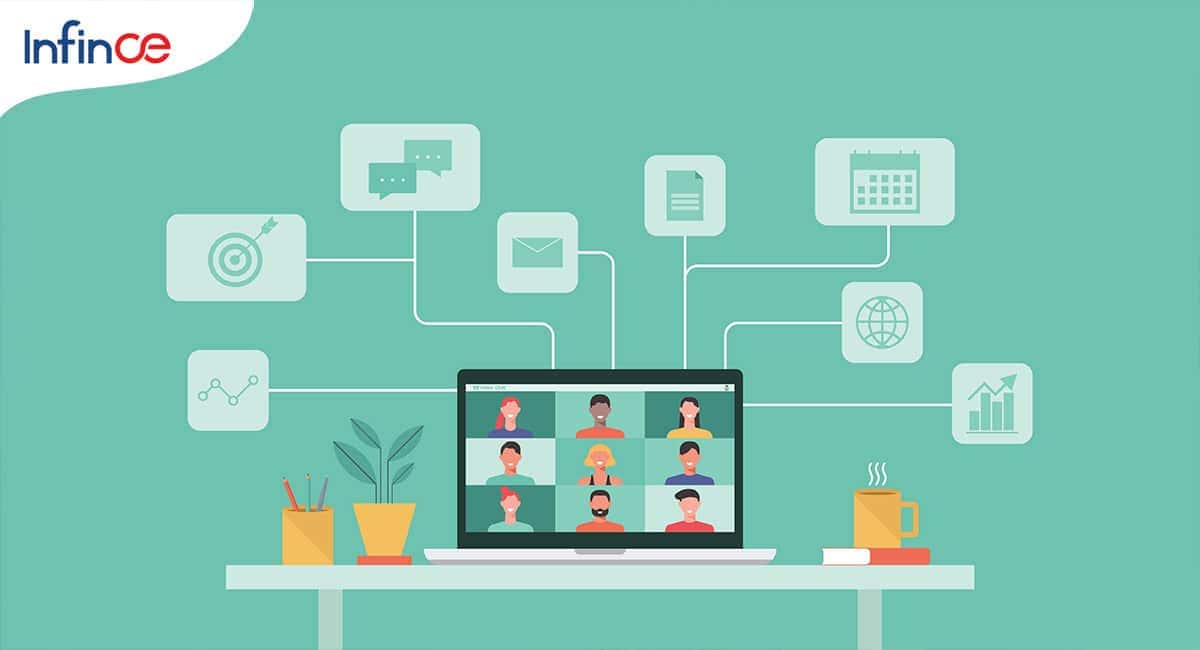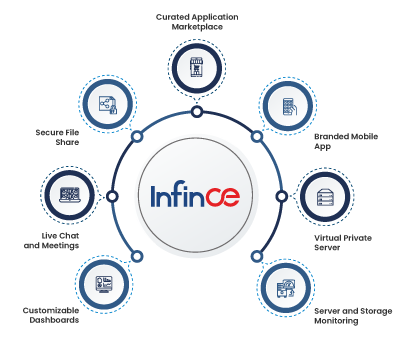Lately, businesses have been rapidly adopting cloud productivity apps as the pandemic and other digital transformation efforts have fostered their progression. While this is certainly a positive trend, it also represents a universal business challenge of managing costs while increasing productivity.
Many organizations have, in fact, been impacted by increased cloud costs–even if collaboration improves and speed of execution increases–with estimates showing that companies spend $3.86 on average for every $1 spent on cloud infrastructure, but 62% without adequate cost controls go over budget.
Flexibility, scalability, and cost efficiency define modern business success today. Cloud based productivity apps sit at the center of this massive shift. They supply a workplace for communication, collaboration, and data in a single, secure, accessible hub.
What Cloud Productivity Apps Actually Solve
Cloud productivity apps consolidate all your work tools into one integrated ecosystem hosted securely in a professional data center. Instead of being disjointed services across your work life, your email and documents and calendar and meetings, and file storage all work fluidly as part of a single platform.
Benefits of Cloud Beyond Convenience
The benefits of cloud productivity platforms go well beyond convenience. They address the core pain points that slow down enterprises and decrease employee productivity. The critical difference between a collection of cloud apps and an actual productivity platform is integration.
While a generic cloud storage lets you access files, cloud productivity platforms connect your files with your communications, your tasks with your calendars, your documents with your approval workflows. Which means, everything functions as one coherent system.
Four Ways Cloud Productivity Apps Transform Workflows
1. Centralization that drives collaboration
With centralized access, employees can log in once and locate documents, applications, and collaboration tools rather than searching through a number of different systems. For example, finance can access relevant spreadsheets, marketing can access messaging and campaign materials, and operations can access procedures. What’s more, all without asking IT for permission or waiting for access to be provisioned across multiple platforms.
By centralizing everything, you have eliminated the version control nightmare!
When everyone is contributing from the same document repository, there is only one “final version,” rather than somewhere between one and ten “drafts” on your local drive and in email! The versioning system maintains version control by clearly tracking who made which updates and, more importantly, when and why!
- Your legal team can now stop emailing contract versions back and forth.
- Your finance team maintains one approved budget spreadsheet instead of 12 different interpretations.
- Your marketing team launches campaigns with current copy, not outdated content from an email attachment.
2. Enhanced communication and collaboration across teams and locations
The purpose of integrated cloud productivity tools is to support the communication and collaboration model of distributed work. Your team in the Singapore office can seamlessly work with anyone from your office in New York in real-time. The platform integrates video calling, instant messaging, and document co-editing rather than requiring a whole toolbox of independent tools for those tasks.
- Scheduling is automatic instead of several days of back-and-forth emails.
- The calendar system knows everyone’s availability and automatically manages invitations. Meeting minutes, action items, follow-up documents, etc., are what lives in the meeting content, ensuring no details get lost.
- Even decisions that occur in the meetings do not require separate documentation in another system because everything is connected.
- Instead of devoting half of a workday to 15 scheduling emails, your exact same project now takes an additional 2 minutes to schedule. You project commences on day 1, instead of day 5.
- Follow-ups happen automatically instead of being lost in someone’s inbox.
3. Safety of stored data and intelligent access control
Security improves automatically when you bring together multiple platforms. Business-class cloud platforms invest in encryption, compliance, and security infrastructure that most organizations cannot provide. The security of your data is extended when it is stored, and during the transmission of data across networks. As a result:
- Access control becomes very easy.
- You define the roles once, and apply them universally. If a person changes a role, or leaves the business, you simply update access in one place as opposed to searching admin panels.
- The system guarantees no one retains access that they should not have, eliminating the blind spots to security that will occur from a fragmented environment.
- Compliance audits become much simpler as you can track a single source of truth for permissions.
4. Flexibility to scale with business growth
Your infrastructure adapts to your actual needs instead of forcing you to forecast the future. Adding 100 new employees won’t really trigger hardware purchases or complex provisioning nightmares. You add users to the platform, and they’re immediately productive.
- Storage scales automatically.
- Seasonal projects that generate terabytes of data expand capacity temporarily and contract when the project ends.
- You pay for what you actually use rather than provisioning for peak scenarios that occur infrequently.
- You hire fast without IT becoming a bottleneck. You open new offices without building infrastructure in each location. You launch ambitious initiatives without capacity planning creating delays.
The Bigger Takeaway: How Cloud Productivity Apps Boost ROI
The return on cloud productivity apps comes from multiple sources that compound over time.
- Cost reduction appears immediately. Moving from 200+ separate vendors to a consolidated platform dramatically cuts software licensing expenses.
- You eliminate duplicate tools, reduce vendor management overhead, and gain transparency into actual usage. Leveraging technologies for workflow optimization and enterprise efficiency solutions is also a key goal, though not necessarily one desired to consider within a cost structure. Cloud based productivity apps provide a cost-effective method for that simplification.
- Productivity increases come in an incremental manner across your available resources. Employees will be able to save time on information locating, access requests, and tool integration support.
- Employee retention improves. When tools work smoothly, employees enjoy their work more. They don’t waste hours toggling between incompatible systems or searching for lost documents. Better tools signal that your organization invests in making their work life better.
How Infince’s Cloud Productivity Apps Can Make a Difference for Your Business?
- Infince Intranet transforms how your organization communicates internally. Rather than having important information broken down across email, shared drives, and other platforms, your company information exists in one hub that is searchable by the employee. This allows employees to find what they need in seconds instead of emailing someone to ask them what drives it on. Net net – new employees get up to speed faster. Knowledge doesn’t lose its value or get lost when people leave.
- Infince Drive provides secure file storage with automatic access control based on your organizational structure. Your files are always protected, and permissions sync with team assignments. No more manual access provisioning or security vulnerabilities from overly permissive sharing settings. File lifecycle management happens automatically.
- Infince Calendar and Meeting make scheduling effortless and remove the chaos from meeting management. Create video meetings straight from your calendar and avoid calendar conflicts. Get a quick glimpse of the availability of your meeting attendees and reserved meeting rooms. Enable hassle-free meeting management without separate booking systems. Also, attach document links to meeting schedules, so that attendees arrive at meetings with context instead of scrambling to understand what’s happening.
- Infince Task connects work assignments with deadlines, dependencies, and team capacity. Your team always knows what needs doing, who’s responsible, and what blockers exist. Progress visibility prevents the communication breakdowns that cause missed deadlines. Managers see where projects are lagging before they become emergencies.
How to Get Started With Infince
Fragmentation isn’t just a technology problem anymore—it’s a strategic disadvantage. Your team can’t move as fast as more streamlined organizations. Your IT team spends resources on maintenance instead of innovation. Your employees work with systems designed to operate separately rather than together.
The Infince Workplace Bundle makes this integration practical and delivers results you can measure from day one. Start with a single team, see the difference, and expand as the benefits become clear. Your organization deserves tools that work together as well as your people do.
Start your 14-day free trial and discover what’s possible when cloud based productivity apps actually work as one system.






